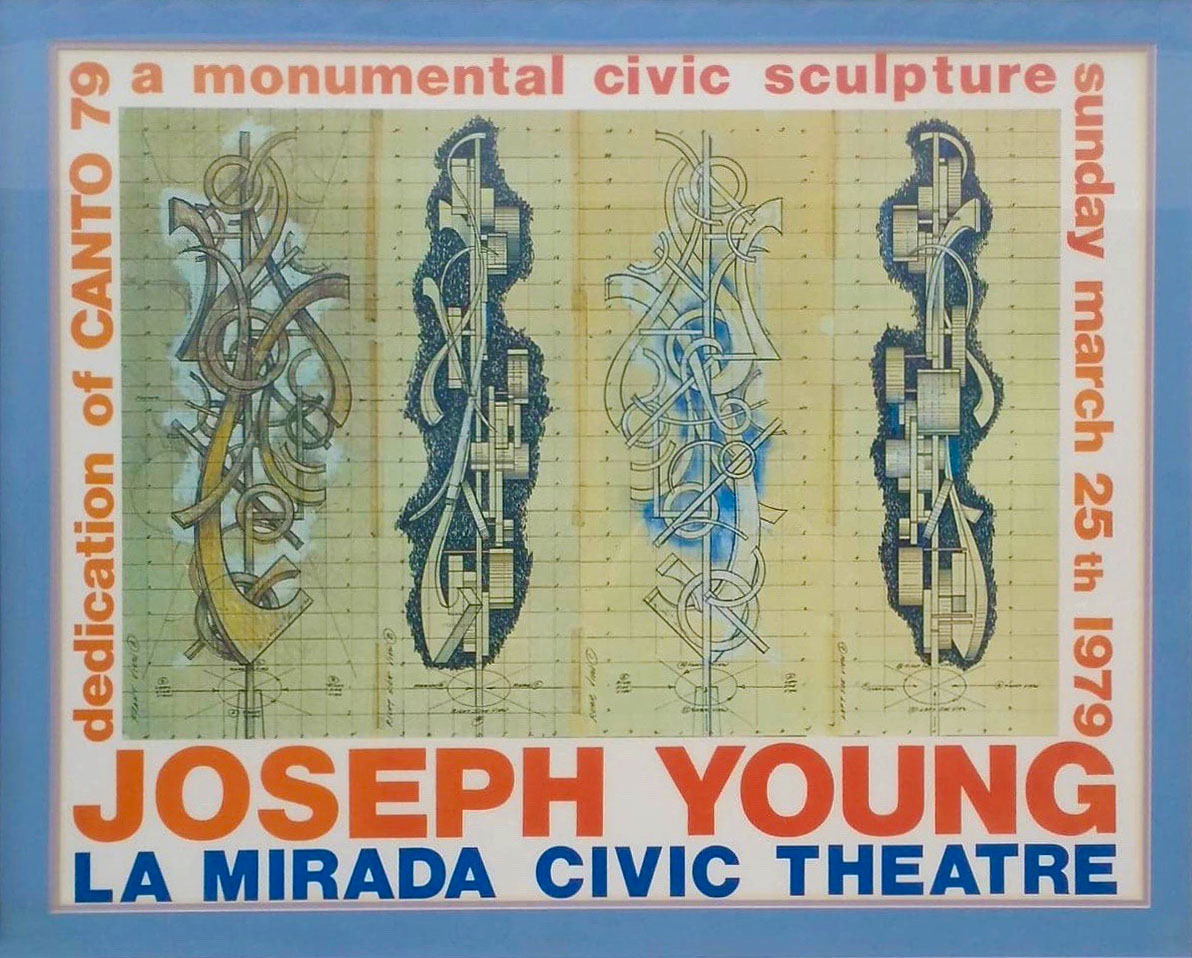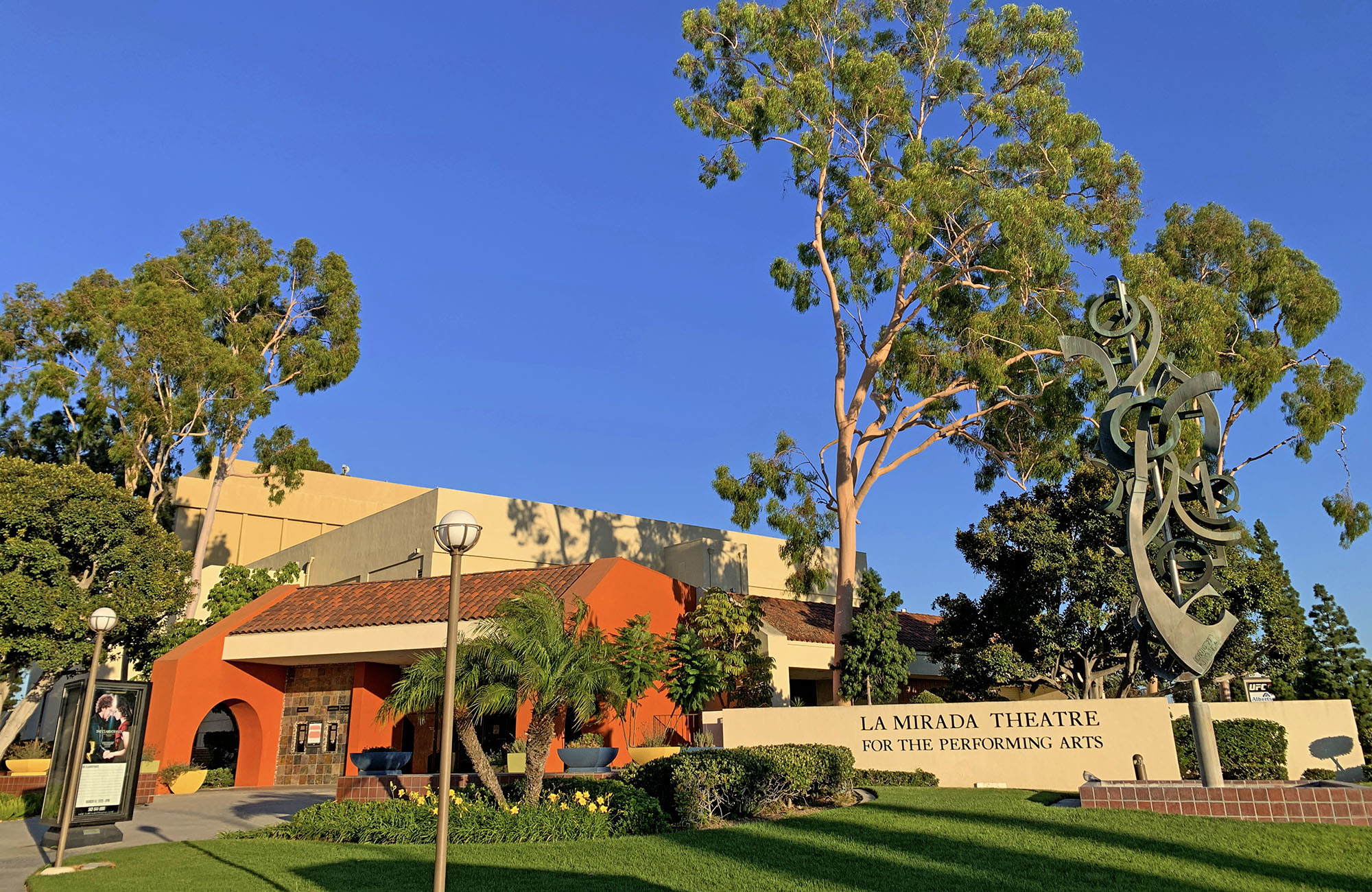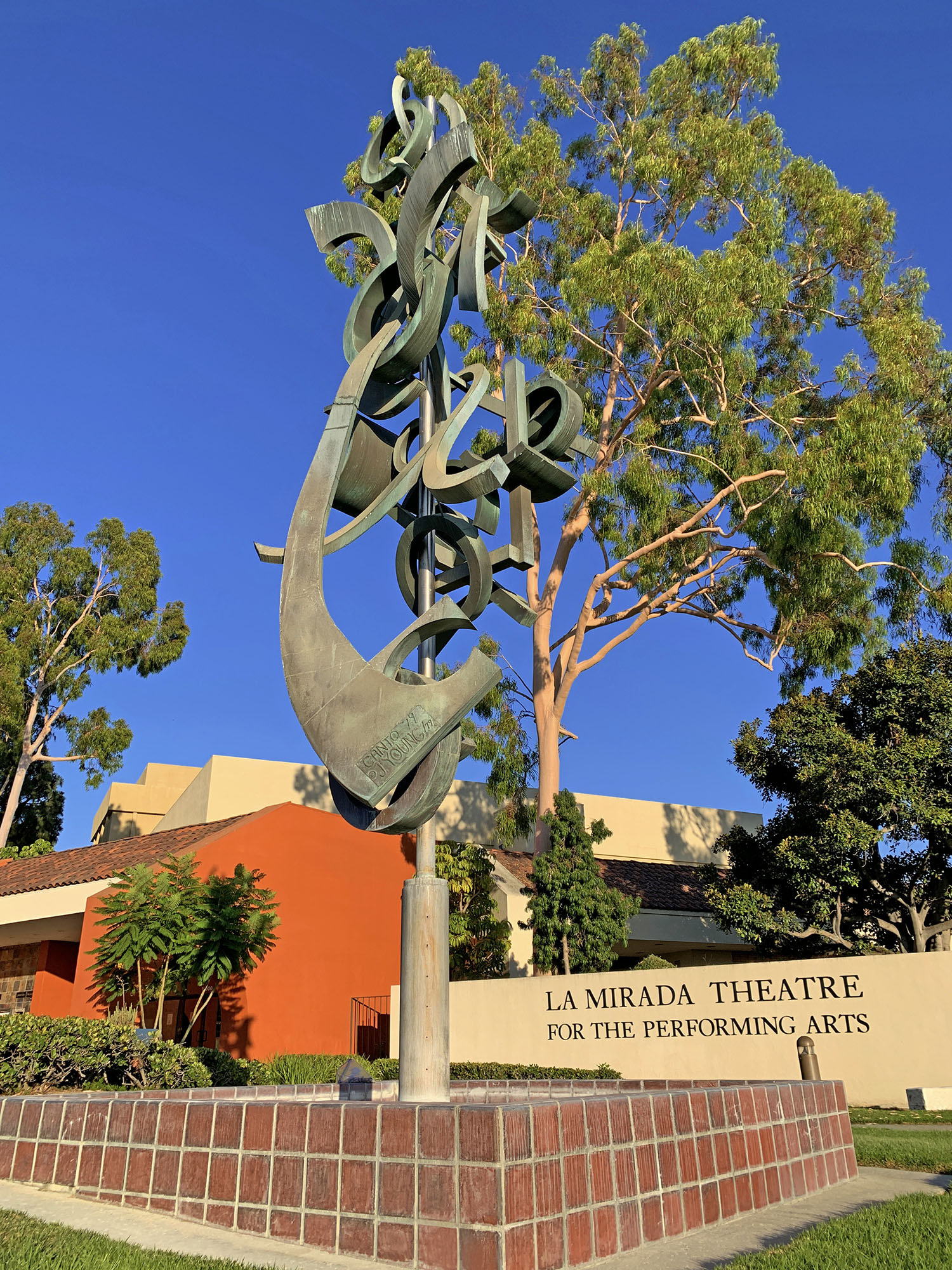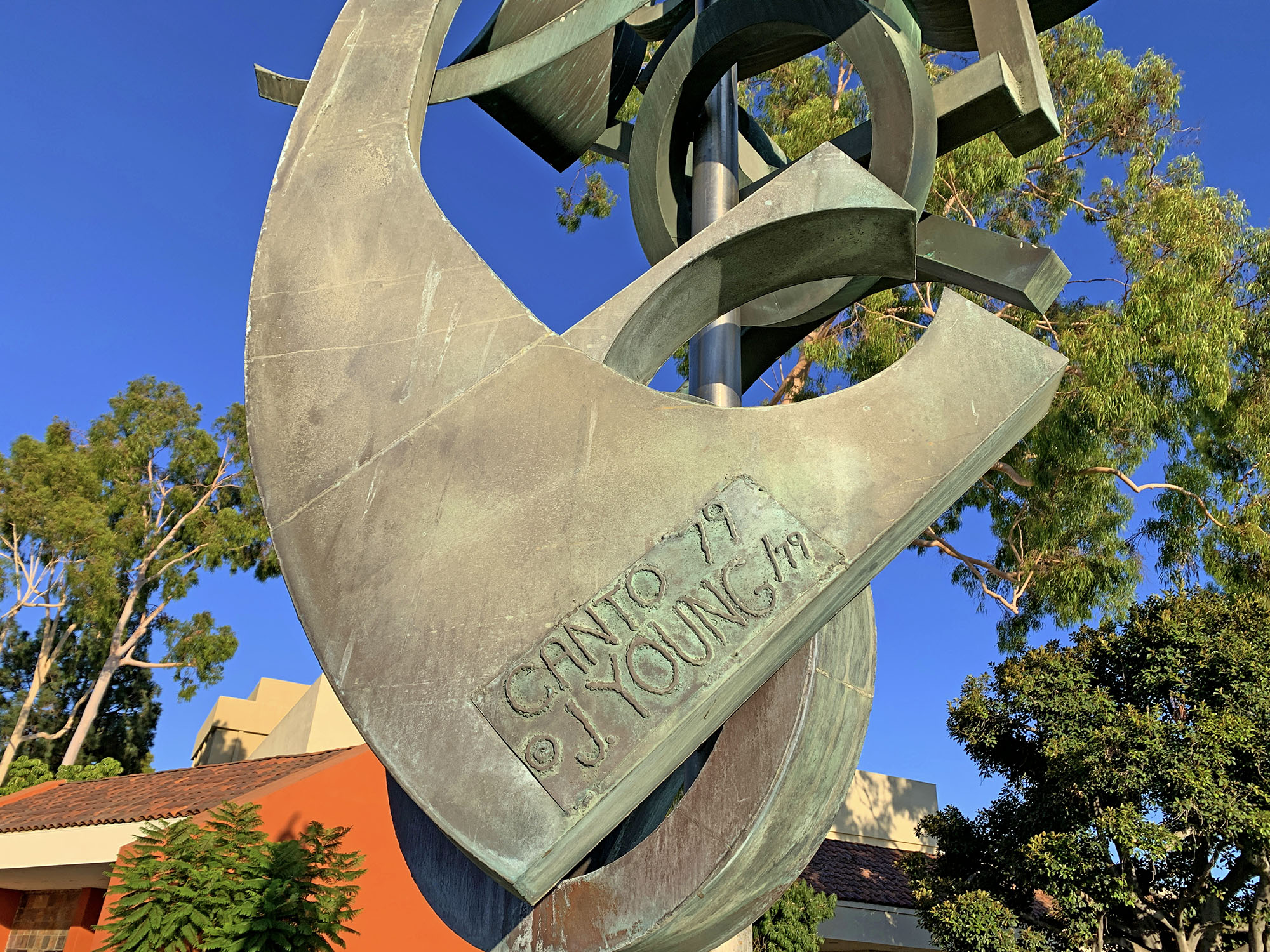Towering prominently at the entrance of La Mirada Theatre sits a sculpture entitled “Canto 79” (or “Song of 79”), a stunning example of civic art created by the internationally acclaimed artist Joseph L. Young. Twenty-eight feet tall, eight feet wide, and weighing nearly two tons, “Canto 79” is an abstract, three-dimensional statement of music that is symbolic of the activities of the theatre. Meant to be seen from multiple perspectives and in various lights, Young’s masterful creation continues to attract attention, decades after its introduction.
Joseph Young (1919-2007) was renowned for his mosaic murals, stained glass windows, monuments and public sculptures in granite, concrete and bronze. During his career, he completed over 60 commissions, with “Canto 79” being the fortieth. His commissions can be seen in civic buildings, churches, synagogues, and other public spaces, as well as privately collected works. His largest work is the mosaic West Apse of the Basilica of the National Shrine of the Immaculate Conception in Washington, D.C. He completed several notable works in Los Angeles including the mosaic mural at the Parker Center, the Holocaust Monument, the mosaic bas-relief on the LA County Hall of records, the History of Mathematics bas-relief panels on the exterior of the UCLA Math Sciences Building and the “Triforium” located in downtown Los Angeles.

La Mirada Theatre for the Performing Arts celebrated its 40th anniversary of the monumental theme sculpture at a re-dedication ceremony on Saturday, November 2, 2019. The fascinating story of its creation and Young’s unique vision was the focus of guest speakers Daniel Paul, the notable architectural historian, and the sculptor’s daughters, Cecily and Leslie Young. The re-dedication ceremony was presented by the La Mirada Theatre Historians, whose research and in-depth interviews inspired the event.
Keynote Speaker Daniel Paul served as the Vice-Chairperson of the Los Angeles Conservancy Modern Committee, a post-war architecture advocacy group founded in 1984. In 2009, he completed draft historic context statements for evaluating Los Angeles architecture constructed between 1965 and 1980 for the Getty Conservation Institute/City of Los Angeles “Survey LA” citywide historic resources survey.




